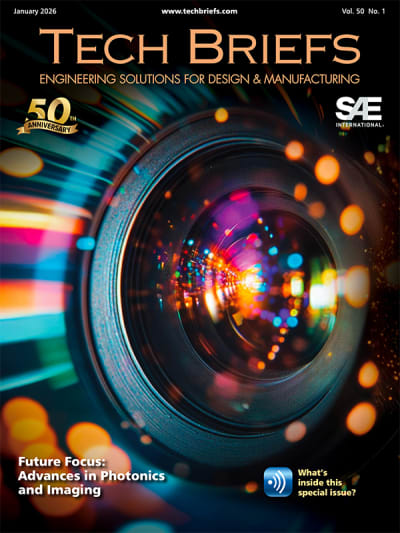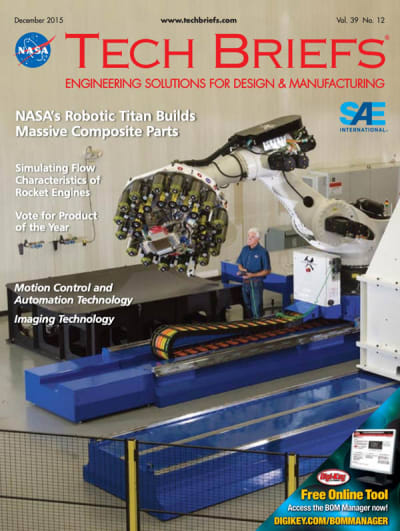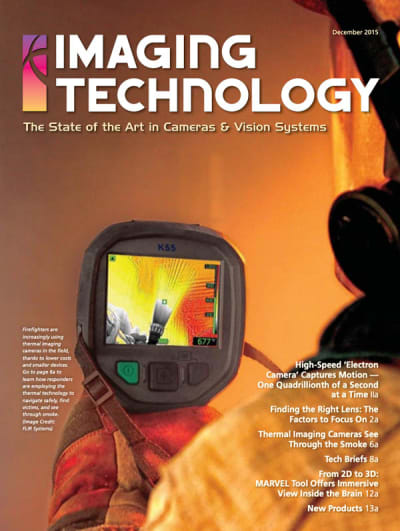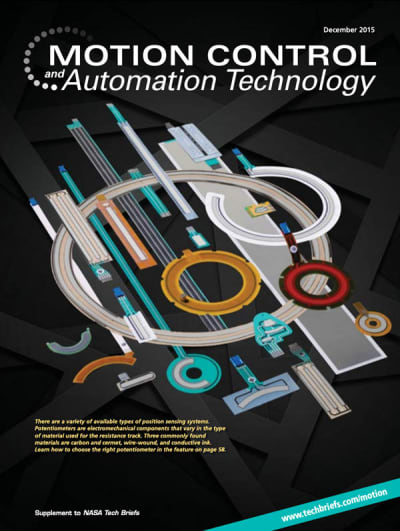Inside this issue
Overview
The December 2015 issue of NASA Tech Briefs presents a wealth of information on cutting-edge technologies and innovations across various fields, including imaging technology and automation. This edition serves as a platform for showcasing advancements that are not only relevant to NASA but also applicable to a wide range of industries.
Key Highlights:
-
Innovative Imaging Technologies: The issue features articles on the latest developments in imaging technology, emphasizing the importance of thermal imaging and high-speed cameras. These technologies are crucial for various applications, including aerospace, medical diagnostics, and industrial monitoring. The advancements in thermal imaging allow for better detection of heat signatures, which can be vital in search and rescue operations, as well as in monitoring equipment for maintenance needs.
-
MARVEL Tool: One of the standout innovations discussed is the MARVEL (Multi-Angle, Real-time, Visual Exploration of the Living) tool. This technology provides an immersive view inside the brain, enabling researchers and medical professionals to visualize complex neural structures in real-time. The implications of this tool are significant for neuroscience, as it can enhance our understanding of brain functions and disorders, potentially leading to better diagnostic and treatment options.
-
Motion Control and Automation: The magazine also delves into advancements in motion control and automation technologies. These innovations are transforming manufacturing processes, improving efficiency, and reducing costs. The integration of automation in various sectors is highlighted, showcasing how robotics and smart systems are streamlining operations and enhancing productivity.
NASA's Role in Technology Transfer: The issue underscores NASA's commitment to technology transfer, where innovations developed for space exploration are adapted for use in commercial applications. This cross-pollination of ideas fosters growth in various industries and demonstrates the broader impact of NASA's research and development efforts.
-
Subscription Information: For readers interested in staying updated with the latest in technology, the magazine provides subscription details. A one-year subscription is available for , while a two-year subscription costs 5. Single copies can be purchased for .25, and foreign subscriptions are priced at 5. This accessibility ensures that a wide audience can benefit from the insights shared in the magazine.
-
Advertising and Reader Engagement: The issue includes a section dedicated to advertisers, providing readers with access to product literature and services that align with the technologies discussed. This engagement with industry partners enhances the magazine's value, connecting readers with potential solutions and innovations.
-
Editorial Team and Contributors: The editorial team, led by Managing Editor Kendra Smith and Editorial Director Linda L. Bell, is dedicated to curating high-quality content that reflects the latest trends and breakthroughs in technology. The contributions from various technical writers and industry experts ensure a comprehensive exploration of topics relevant to both professionals and enthusiasts.
-
Future Outlook: The magazine concludes with a forward-looking perspective on the future of technology in relation to space exploration and terrestrial applications. As industries continue to evolve, the integration of advanced technologies will play a pivotal role in addressing global challenges, from climate change to healthcare.
In summary, the December 2015 issue of NASA Tech Briefs is a rich resource for anyone interested in the intersection of technology and innovation. With its focus on imaging technology, automation, and NASA's role in technology transfer, the magazine provides valuable insights that can inspire further exploration and application of these advancements in various fields. Whether you are a professional in the industry, a researcher, or simply a technology enthusiast, this issue offers a comprehensive overview of the current landscape and future possibilities in technology.
Features
-
Application Briefs
NASA Turns to 3D Metal Printing for SLS Propulsion Program
NASA Leverages Analytical Modeling to Improve Astronaut Mission Readiness
-
Who's Who
Al Bowers, Chief Scientist, Armstrong Flight Research Center, Edwards, CA
Dr. Santo A. Padula, Materials Research Engineer, Glenn Research Center, Cleveland, OH
-
Articles
Multiphysics Software Models Mean Flow Augmented Acoustics in Rocket Systems
Top Prizes Awarded in the Create the Future Design Contest
Tech Briefs
-
Bio-Medical
Universal Cell-Directed Nanotheranostics
Fluid Preservation System (FPS)
Using Electromagnetic Time-Variance Magnetic Fields to Generate and Re-Grow Cartilage
Computer-Aided Design Tools to Support Human Factors Design Teams
Advanced-Capabilities Medical Suction Device
Use of Osteoclast-Inhibiting Compounds to Prevent Radiation-Induced Bone Loss
-
Manufacturing & Prototyping
Stable, Flat Packaging Concepts for Large Detector Arrays
Dual-Polarized W-Band Metal Patch Antenna Element for Phased Array Applications
High-Temperature Superconducting Bolometric Devices on Amorphous Silicon Nitride Membranes
Uniformly Etched Lateral Gratings Applied to Pre-existing Ridge Waveguides
-
Information Sciences
Automated Generation of Failure Modes and Effects Document from a Simple SysML Model
Space Network Access System (SNAS)
Educational Software for OctaSat Nanosatellite Training Kit
Program to Categorize and Count Observations Performed by the Mars Reconnaissance Orbiter
Anomaly Detection in Large Sets of High-Dimensional Symbol Sequences (sequenceMiner)
Time-Scaled Activity Diagram Simulator
-
Mechanics & Machinery
Use of Eccentric Bushings to Precision-Locate Multiple Parts on a Large Mating Structure
Effective Packing of Large Panels via Scrolling and Origami Folding
Six-Degree-of-Freedom Control With Only Eight Thrusters
Precise Direct Control of Pressure or Vacuum Using a Digitally Controlled Actuator
Irreversible Entropy Production Rate in High-Pressure Turbulent Reactive Flows
Piezoelectric Actuator for a 2-inch Isolation Cryogenic Valve
-
Electronics & Computers
EADIN Lite Communication Network
Iris DSN-Compatible, CubeSat-Compatible Transponder
Cockpit Avionics Upgrade Display Atlas, Generic Display Software, and Electronic Procedure System
Multi-Frequency, THz Quantum Cascade Laser Source
Avionics/Electronics Box Rail Mount System
Semiconductor Nanomembrane-Based Flight Sensors and Arrays
Dual I²C and SPI Slave Core for FPGA and ASIC Implementations
Automated Break-Out Box for Use with Low-Cost Spacecraft Integration and Test
Radiation-Hardened 10BASE-T Ethernet Physical Interface (PHY)
Radiation-Hardened, Quad 12-Bit Digital-to-Analog Converter ASIC
-
Communications
Confidence Intervals for the Bit Error Rate of Coded Communications Systems
Final High-Fidelity Down-Conversion Source for Secure Communications Using On-Demand Single Photons
Space Telecommunications Radio System Memory Test Application
Communication System and Method Over High-Latency, Low-Bandwidth Networks
Products
-
Briefs
Modified-Wolter-Schwarzschild X-ray Telescope
Machine Vision-Based Pose Estimation System
Solar Doppler Shift-Based Solar Tracker
Beam Shaping for CARS Measurements in Turbulent Environments




